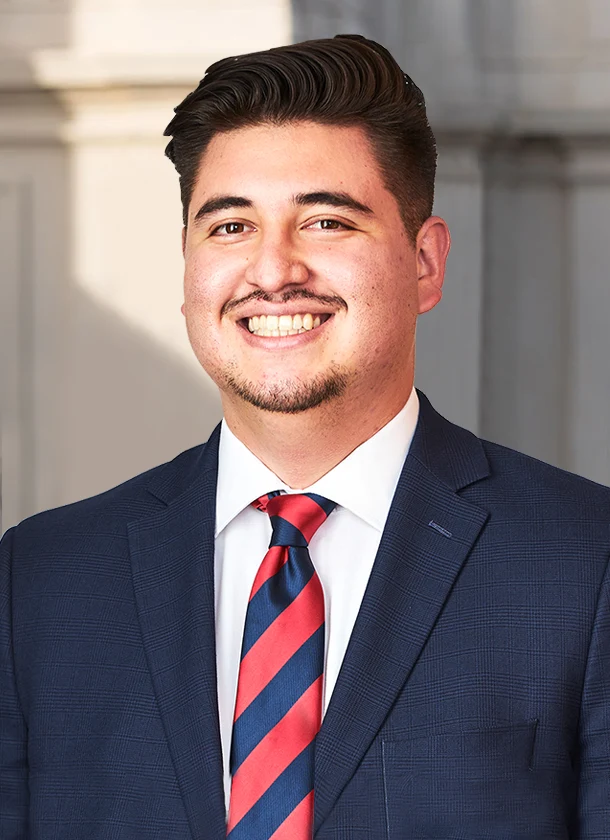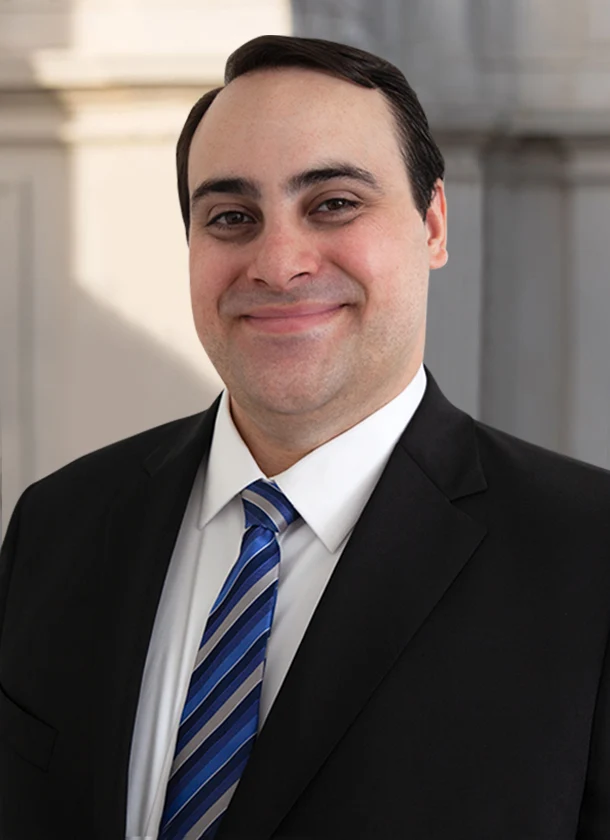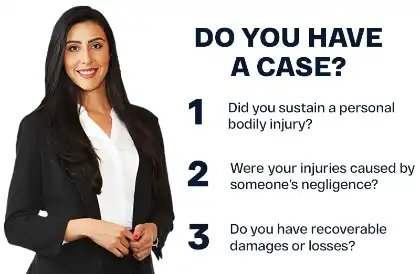Table of Contents
The Types Of Brain Injuries Caused By Automobile Accidents
Motor vehicle accidents may cause serious bodily injury or death. Many victims who survive motor vehicle accidents suffer temporary or permanent disabilities. Every automobile accident is unique, and no two collisions will produce the same injuries. Many victims may experience multiple injuries, including fractured bones, lacerations, open wounds, and traumatic brain injuries.
Traumatic brain injuries may be categorized as open or closed, but all brain injuries cause serious consequences for the victims. The human brain is a sensitive organ, and any injury to the physical structure of the brain can have a profound effect on behavior, cognition, and emotional regulation. Motor vehicle injury victims who suffer traumatic brain injuries are likely to experience long-term consequences that alter their quality of life.
Many victims suffer head injuries during motor vehicle collisions. A severe head injury may produce lifelong symptoms. The victims who suffer these injuries may be eligible to seek damages related to their injuries. Our experienced brain injury attorneys offer victims free initial consultations to help them understand their legal options.
Our California vehicle accidents attorneys are trained litigators who can help victims pursue compensation for medical bills, lost wages, and other losses. The car accident lawyers at our law firm have years of experience serving clients in San Francisco, Riverside, Sacramento, San Jose, Los Angeles, San Diego, and Sherman Oaks, as well as throughout the rest of the Golden State.
Our brain injury attorneys have helped numerous clients in California negotiate settlements for their injuries. The following sections outline the various types of brain injuries that can result from automobile accidents.
How Do We Define Brain Injuries?
Traumatic brain injuries are characterized by any sudden physical damage to the brain itself that is caused by any kind of force to the head. The common causes of traumatic brain injuries include physical attacks, sports-related injuries, slip and fall accidents, and motor vehicle accidents. Traumatic brain injuries can range in severity from a mild concussion to a severe head injury that causes irreversible brain damage as well as permanent disability or even paralysis.
Victims living with a traumatic brain injury may experience long-term challenges, although many of them may still achieve functional independence over time. A large majority of victims who suffer severe traumatic brain injuries will experience physical, behavioral, and cognitive changes. Emotional regulation may be impaired due to damage to the limbic system. Fine motor skills may also be lost.
Some victims may experience long-term and disabling memory loss that can make it difficult for them to function in everyday life. The victims who enter comas or live in minimally responsive conditions must depend on the care of others for their basic needs. Family members or medical professionals may have to perform these duties for the remainder of the victim’s life.
Traumatic Brain Injury Statistics
Approximately 1.5 million traumatic brain injuries occur every year in the United States, according to the Centers for Disease Control and Prevention. These injuries happen either alone or together with other serious injuries. Furthermore, motor vehicle collisions are a significant contributor to the total number of TBIs reported annually. Falls account for more than 35 percent of all traumatic brain injuries. Traumatic brain injuries cause 30 percent of all accident-related deaths in the country. Automobile accidents account for more than 14 percent of this total.
For individuals ranging in age from five to twenty-four, TBIs caused by motor vehicle collisions are the greatest cause of death. These injuries can also lead to hospitalization, particularly for younger individuals. If you are suffering from such injuries, our brain injury lawyers at Arash Law can help by representing you and pursuing compensation for your losses.
With decades of collective experience, the lawyers for brain injury cases at our law firm have the knowledge, experience, and resources that may help you handle all aspects of your personal injury case. We can represent clients across California, including in San Francisco, Riverside, Sacramento, San Jose, Los Angeles, San Diego, and Sherman Oaks.
From 2006 to 2014, the combined number of TBI-related emergency visits, hospitalizations, and deaths increased significantly. Statistics show that TBI-related emergency visits and fatalities remain a serious public health concern.
Each year, thousands of people in the United States die from traumatic brain injuries sustained in motor vehicle collisions. Approximately fifty-five thousand individuals die in the United States every year due to complications caused by traumatic brain injuries. Traumatic brain injuries are a primary cause of disability in the United States.
If you add up all the disabilities caused each year in the United States by spinal cord injuries, breast cancer, HIV, and multiple sclerosis combined, traumatic brain injuries still disable six times as many people. Approximately five million United States citizens currently receive lifetime assistance with daily tasks because traumatic brain injuries have deprived them of the ability to care for themselves.
The Categories Of Brain Injuries
- Hematoma – Ruptured blood vessels produce blood clots. If blood leaks from the bloodstream, it becomes thick and begins clotting. Clotting is a spontaneous mechanism used by the human body to stop bleeding. Hematomas may range from small to large.
Extremely large hematomas may increase pressure in the brain. Specific areas of coagulation will produce different symptoms. Epidural hematomas are clots occurring between the dura mater in the brain and the skull. The human body reabsorbs the clot. Medical professionals may opt to use surgical procedures to remove large hematomas.
- Traumatic Subarachnoid Hemorrhage – Traumatic subarachnoid hemorrhages occur in the area surrounding the brain. This area contains cerebrospinal fluid that protects the brain. When a head injury occurs, tiny arteries could rupture and cause traumatic subarachnoid hemorrhage. Released blood moves across the surface of the brain and produces various symptoms.
- Penetration Injuries – Penetration injuries occur when any type of object punctures the skull and enters the brain.
- Axonal Diffuse Injuries – Any sudden and violent motion of the neck and head may cause structures inside the brain to tear. Axonal diffuse injuries are seen in severe and mild concussions.
- Coup-Contrecoup Injuries – An object penetrating one side of the brain and exiting the brain at the opposite side of the entrance wound is known as a coup-contrecoup injury.
- Contusions – A contusion is an injury that involves the bruising of the brain. Contusions may become more severe over time and require removal through surgery.
- Concussions – Drivers and passengers who suffer a bodily injury during motor vehicle accidents may experience the symptoms caused by concussions. Concussions are common brain injuries that occur during any type of collision or abrupt movement that affects the skull and brain. These brain injuries are often suffered by drivers and passengers who are injured during motor vehicle accidents.
A brain injury can impact nearly every aspect of an individual’s life. Severe brain injuries may affect memory, cognitive function, and emotional regulation, altering how effectively they can conduct day-to-day tasks. Lawyers who represent brain injury victims often rely on medical evidence to support compensation claims and advocate for injured victims’ rights after a collision.
Traumatic Brain Injuries Categorized As Either Severe, Moderate, Or Mild
Mild traumatic brain injuries affect an individual’s ability to coordinate their bodily movements. Memory, attention, and overall cognition may rapidly deteriorate after an individual suffers a concussion. However, mild concussions rarely cause these severe symptoms unless they repeatedly occur within a short period of time. The majority of patients who suffer mild concussions could recover in a matter of days with adequate rest and hydration.
Two of the prevalent symptoms associated with moderate traumatic brain injuries are sadness and anxiety. After the injury, an individual may experience drowsiness. Individuals may lose consciousness for a period ranging from twenty minutes to several hours. An individual may experience an increase in brain volume and bleeding that can cause fatigue. However, the individual can still awaken with smelling salts and other stimuli.
Severe traumatic brain injuries happen when the brain itself moves inside the skull and is physically damaged. Any type of traumatic brain injury in which an object punctures the skull is also a serious injury that will produce severe symptoms.
During these types of traumatic brain injuries, the individual will become unconscious and experience debilitating symptoms. During a severe traumatic brain injury, the individual loses consciousness and does not wake up when exposed to an external stimulus. The eyes remain closed. In some extreme cases, the individual will lose consciousness for more than six hours.
How Are Traumatic Brain Injuries Diagnosed?
An injured victim who suffers a head injury during a motor vehicle collision will be sent to the emergency room. A medical professional will assess the patient, observe any symptoms, and learn how the individual was injured. A physician can often determine how severe a traumatic brain injury is by observing the condition of the patient.
A traumatic brain injury patient may be assessed according to the Glasgow Coma Score, a fifteen-point range that quantifies a patient’s level of consciousness. Physicians often assess the patient by asking the patient to open their eyes. The doctor will then request that the patient reply in a specific manner to orienting inquiries that are generic and straightforward. Next, the medical professional will determine if the patient can obey simple directions.
A patient may be unconscious or incapable of responding to simple commands. A physician may then determine if the patient can respond to painful stimuli. The Glasgow Coma Score comprises several numbers from different categories that are added up to a score from three to fifteen. This scale is used to categorize traumatic brain injuries as either mild, moderate, or severe.
Mild traumatic brain injuries range between thirteen and fifteen on the Glasgow Coma Score. Moderate traumatic brain injuries range between nine and twelve. Severe traumatic brain injuries range between zero and eight.
Imaging Tests
CT scans are X-ray procedures that enable physicians to obtain pictures of the different regions in the brain. A medical professional will often order a CT scan of the brain to identify skull fractures, hemorrhaging, blood clots, and the injury’s severity. CT scans can be used to determine if the injury is progressing during the healing stage. Physicians often use CT scans to determine which type of treatment the patient should undergo.
Magnetic Resonance Imaging uses radiofrequency waves and the magnetic field to produce images of the soft tissue inside the brain. Oftentimes, a physician injects the patient’s bloodstream with a dye. These images detect minute alterations in the brain that may not be detected by a CT scan.
Magnetic Resonance Spectroscopy produces data on brain metabolism. The result of this scan can help physicians estimate how long it will take for a patient to recover from their traumatic brain injury.
Which Treatment Options Are Available?
Patients who suffer mild traumatic brain injuries often need to rest and take medication. Intense medical treatment and hospitalization are required for those who suffer moderate to severe traumatic brain injuries. If the brain enlarges and hemorrhages to an excessive degree, then surgery may be the only way to save the patient’s life. Some patients may not require surgery even after suffering a severe traumatic brain injury.
Nurses and assistants in the neurological critical care unit may monitor these patients to make sure their conditions do not deteriorate. Individuals who suffer traumatic brain injuries may become extremely sick. Physicians and other medical professionals attempt to reduce any subsequent brain damage. Once the patient transfers to a recovery setting, then holistic healing can begin. Attorneys who handle brain injury cases often use these medical details to support claims and help victims pursue compensation for their injuries.
What Is Neurocritical Care?
Neurocritical care is a specialized method of treatment for individuals who have suffered serious brain damage that may prove to be fatal. Unfortunately, many individuals who suffer severe traumatic brain injuries are paralyzed or unconscious. These patients may also have injuries involving other parts of their bodies. Neurointensivists are trained medical professionals who organize and coordinate treatment plans for patients who need neurological and medical treatment.
These patients are often physically connected to screens, monitors, and tubes. These mechanical systems provide a medical team with detailed information regarding bodily functions such as blood pressure and oxygen levels. Machines may assist patients with breathing, feeding, and urinating.
A family member may no longer have the same face due to facial lacerations or large equipment used to monitor the patient’s physical condition. Tubes, wires, and other types of equipment may be connected to the patient to monitor blood pressure and heart rate.
Severe traumatic brain injuries affect not only the injured victim but their family members as well. These relatives could face challenges physically, emotionally, and mentally. Family members may have to care for a patient in a coma for the remainder of the patient’s life.
Medication
Medical professionals will often use specific medication to sedate the injured patient. Patients receive pain medicine to help them cope with the pain caused by other injuries that accompany their traumatic brain injury. Our lawyers for brain injuries understand that it can be challenging to care for a loved one who suffers a severe traumatic brain injury.
If you or a loved one is suffering from a traumatic brain injury due to the negligence of another party, contact the brain injury attorneys at Arash Law to schedule a free initial consultation. Call our firm at (888) 488-1391 to learn more about the legal services we offer. We represent clients throughout California, including San Francisco, Sacramento, San Jose, Los Angeles, San Diego, and Sherman Oaks.
Do I Need An Attorney After Sustaining A TBI?
In case you or a loved one has been injured in a car accident, you can look for a personal injury lawyer who can represent your interests, advocate for your rights, and help you pursue compensation for your losses. Based on the type and location of the injury, the person’s symptoms might include:
- Reduction of consciousness
- Confusion and disorientation
- Memory loss/amnesia
- Fatigue
- Headaches
- Visual problems
- Poor focus/concentration
- Sleep disturbances
- Dizziness/loss of balance
- Irritability/psychological disturbances
- Feelings of depression
- Seizures
- Vomiting
You can contact a brain injury attorney with the experience and skill you and your family may need to file a legal claim. An experienced TBI lawyer will have the ability to evaluate whether you have grounds to pursue compensatory damages for your injuries from those who may have caused them as a result of at-fault, negligent, reckless, or aggressive driving or by other means like faulty parts, defective or recalled automobiles, or automotive design flaws.
These damages could include the price of medical bills, property damage, lost wages, and pain and suffering. In rare cases, victims may also be entitled to seek punitive damages, which are intended to punish the defendant for their extremely negligent or reckless behavior in the event of automotive negligence or liability claims. Meet TBI Tina, our firm’s lead attorney in brain injury accidents.































